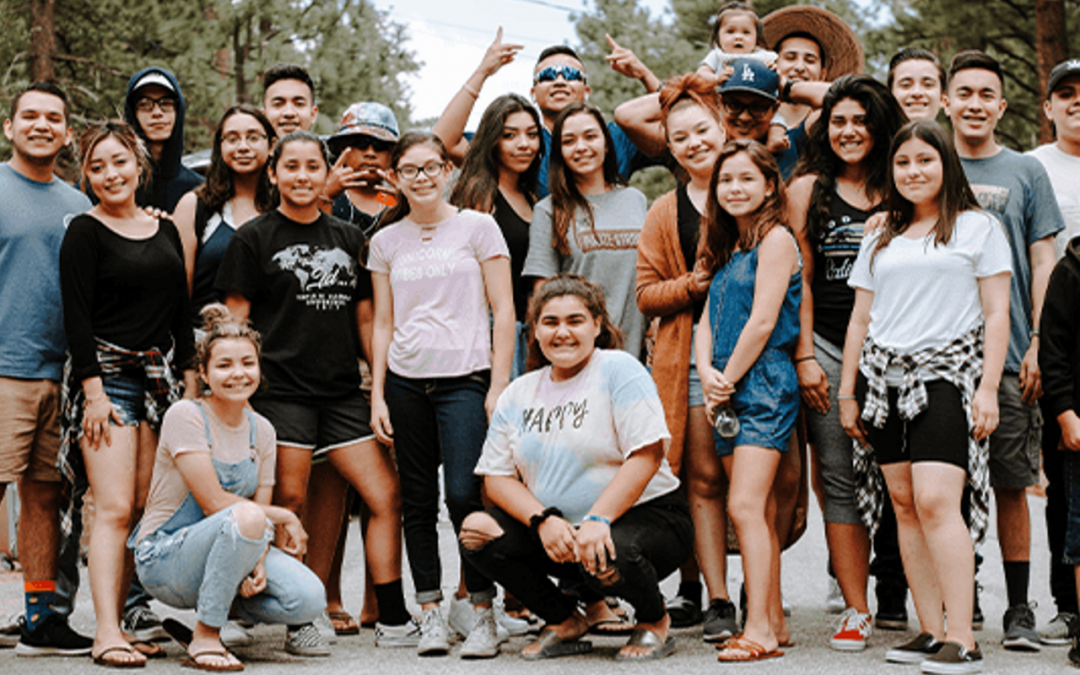
04 | Unintended Consequences: Hospital Consolidations and Women’s Health (Part 1 – What the Research Says)
The rapid consolidation of hospital systems across Illinois has been dominated by Catholic hospitals, making strong gains based on their financial strength. With a growing share of hospitals now operating under the Ethical & Religious Directives for Catholic Health Care Services, providers in these systems of care face limitations on the provision of family planning services for their patients and limited options for OB-GYN training as well.
In this episode, I’m talking with Kai Tao, ND, APN, MPH.
For more nearly two decades, Kai has been in practice as a certified nurse-midwife, Deputy Commissioner with the Chicago Department of Public Health, Senior Policy Advisor for the Director of the Illinois Department of Health and Family Services, and Vice President of Clinical Operations with Planned Parenthood of Illinois.
READ MORE
As hospitals across the state are consolidating through mergers and acquisitions to gain market share, many Catholic hospital systems have made strong gains based on their financial strength. With secular and faith-based systems now under their purview, Catholic hospital rules regarding reproductive health care will apply to a greater number of women in Illinois; especially low-income, Medicaid eligible women.
In the backdrop, Illinois Governor J.B. Pritzker signed the Reproductive Health Act in July of this year. The Act eliminates nearly all restrictions on contraception, sterilization, and abortion in the state, and ushered in a law that supports reproductive health care as a “fundamental right”. Yet, as reported in the Crain’s Chicago Business July 2019 article “Why Illinois’ newly recognized ‘fundamental right’ is getting harder to exercise”, the new law and the acquisition of regional hospitals by Catholic systems are at odds with one another. Catholic hospitals operate under a set of rules known as Ethical & Religious Directives for Catholic Health Care Services, or ERDs, which were developed by the U.S. Conference of Catholic Bishops.
ERDs largely restrict access to care and the provision of care for contraception, fertility treatment, sterilization, and abortion. For women covered by Illinois, Medicaid managed care plans in Cook County, this creates a significant barrier to comprehensive reproductive health care access, as the County’s plans are heavily dependent on contractual referral relationships with hospitals newly merged with Catholic hospital systems.
A recent University of Chicago report indicates there are a disproportionate number of low-income women in health plans served by these hospital systems and that health disparities are likely to increase. In this episode, we talk with a women’s health provider and women’s health advocate about the rapid consolidations, the report and the implications for patients and providers across Illinois.
In 2018, Kai launched Juno4Me, a non-profit that provides free IUDs and implants to people in Chicago. Kai’s extensive experience in women’s health, program development, public health policy advocacy, and clinical operations brings a multi-sectoral approach to the challenges of access and equity these recent hospital merges pose to women across Illinois.
Juno4Me believes that everyone should be educated and have access to every type of birth control, especially the modern ones such as the new and improved IUDs and Implant. IUDs and the Implant work super well at preventing pregnancy, are considered safer than the typical pill since they don’t contain estrogen, and more importantly, you can forget about it and it’s still doing its a primary job.
QUESTIONS & ANSWERS
How might this phenomenon impact the number of providers who are willing and able to deliver family planning services across Illinois?
Dr. Stulberg and I have talked about the data, and for the last few years, the data has been saying that about 1 in 3 hospital networks are either religiously affiliated (often Catholic-affiliated, but could also be non-Catholic, Christian-affiliated) systems, so this data didn’t totally surprise me. I think what was very salient about this data was that, we actually looked at the users of Medicaid from 2015 – 2018, and women from the 15-44 age range, who actually use Medicaid and we saw that women of color were more likely to be enrolled in these programs in Medicaid and thus have the limitations of truly having providers who can provide full access to contraception and reproductive health services.
How might family planning training for providers be different in Catholic hospital settings?
When we think about workforce and pipeline, it is so critical. Not only are we providing evidence, but you want skilled providers who are well trained, and unfortunately for many of these systems that may have some kind of residency, and that could range from family medicine, internal medicine, OBGYN of course, and also for nurses, nurse practitioners, physicians and physician assistants, so it’s not just OBGYN doctors. Their training is really going to be missing a big part of comprehensive care for women.
Will providers have options for patients in need of family planning services that aren’t provided in hospitals newly operating under ERDs?
Full disclosure, I think there’s variation across the system of hospitals that practice under ERDs, in terms of what can or actually cannot happen, as I say, behind the exam doors. We know, within a hospital system, like if you actually practice within an in-patient hospital setting, we believe (and I’ve seen, because I’ve been working in labor and delivery here in Chicago for about 15 years, so we talk a lot to our peers) you really cannot get something like a tubal ligation if a woman says “I’m done with childbearing, I really want to have a tubal ligation”. A pretty simple procedure, especially if you’re already inpatient in the hospital – that cannot happen, right? What happens through ambulatory, so outpatient, affiliated with the hospital? I have to be candid that I think there’s variation. But again, that’s not how good health care delivery should happen; based on if you have a provider who happens to be savvy. We see a lot of people who are going to these religious [affiliated] clinics, and they all have really bad menstrual cramps or they may have severe other issues associated with needing birth control for non-pregnancy reasons.
And can’t access it?
Well, no. That’s how we’re able to access it, because really – under the directive – it’s saying that you cannot use birth control for pregnancy prevention. If you have some real medical indications that has nothing to do with preventing pregnancy, we can most likely help you. Especially in the outpatient setting, and that’s what I’m saying. A lot of young people are saying “I got birth control pills because it’s being prescribed for a medical reason, and not necessarily for pregnancy prevention”.
I also often wonder how often women who are part of these Medicaid managed care plans that now have hospitals in their networks that are operating under ERDs are even aware that, when they signed on to these plans, that there are these restrictions. My guess is, they show up for what they need, only then to discover what the barriers are. Like the woman in the Crain’s article.
Yeah, and the woman in the article found out what the reason is. Most people are just assuming that they’re getting good care, they have coverage, and this is what their provider offered. End of story. My provider doesn’t do this, so I don’t think that’s a procedure I’m going to get, so that’s fine. Most people are not going to question it, and there’s definitely nothing at this point that tells the user when their picking a plan; oh – if you pick this plan, these are the hospitals, and you may not get the full reproductive health services that are based on evidence and science.
That might be necessary for you based on your age and gender.
Exactly.
There are several key objectives in the CDC’s Healthy People 2020 Family Planning Goals, including increasing the proportion of health insurance plans that cover contraceptive supplies and services. These are national goals that set the standard for public health planning at the state and local levels. Reflecting on your extensive work and practice in women’s health, and as an administrator in Illinois and Chicago’s health departments, what impact would these recent hospital mergers have on family planning outcomes at the population level?
I mean, the reality is, there’s a real disconnect when we think about what actually happens from a payor source (the insurance plan) to the experience that an end user may have. Unfortunately, they are often very misaligned. I think, overall, in the United States we’ve seen trends where unplanned, untimed pregnancies are decreasing.
I believe they’re decreasing here in Illinois.
Correct. Nation-wide, consistent with Illinois and even in Chicago, we’ve seen a decrease, which is great. However, like many health outcomes, we see significant disparities. In the city of Chicago specifically, when we look at teen births [from] 15 – 19 years old, we see Black and Latinas having birth rates five times higher than White teens. I always like to say, it’s not because the White teens are having less sex. Right? It’s all about education and access. And so, you know, these goals that the CDC has, they’re nice targets to have, and we’re seeing progressively downward trends. But [at] the end of the day, these disparities are something that are very real, and very evident here in the city of Chicago.
And they are particularly relevant as the majority of the women who are on the 5 to 7 Medicaid managed care plans, for which the dominant hospital systems are now Catholic hospital systems are African American and Latinx women.
Correct, and when we look at national data, who’s most at risk for unplanned, mis-timed pregnancies? We see it in the younger age; 24 and under is the highest. Even though I say 45% of pregnancies are unplanned or mis-timed, in the under age 24, its 80-90% unplanned and mis-timed. What are the other characteristics of women who self-report having an unplanned or mis-timed pregnancy? They are usually cohabitating with someone, and single. They are usually at or below the federal poverty level. They usually don’t have a high school degree, or are still in high school – so never even got out of high school. Those are the main characteristics, and of course, they are women of color. The people who need the services are the ones that, under the ERDs, are being hurt the most.
What might be policy-level options to reduce or eliminate the resulting disparity?
First thing is we have to do more public education, so people know what are their options. What you had in 1980 and what your maternal grandmother told you is not what’s available in 2019. I think more people need to have that education, and with the advent of social media, anything goes. So there’s a lot of misconceptions and myths happening in the world, and in health care in general, and we see it predominantly in birth control and reproductive health. Things that are simply not true, and the evidence has shown us otherwise.
So we need education in the first place, which we can say would be a different podcast. Talking about comprehensive, medically-accurate, age approrpriate K-12 education. But more importantly, people who are on these Medicaid plans; do they know, and do providers know that, nationally, under the Centers for Medicaid and Medicare, there is a freedom of choice provision. Which means that, it doesn’t matter who your primary care physician is, or what network you’re in, or what medical home, you have the right to seek contraceptive healthcare outside and still get coverage. Unfortunately, that is one of those things that most people who know about this say, great, but the end user has no idea. And, of course, many providers have no idea. They would just say, “Well, this is all we offer here, and this is your coverage”.
So I think some policies would be, first, let’s let more people know about this. Let the end user know that she has options. Once she knows what all of her options are, where to go to get these options. That’s the other big piece. And that was just one prong of Juno4me, when we’re talking specifically about IUDs and implants. To help identify some places you can go, and you will get coverage no matter what.
And you will get transportation to get there, which is yet another barrier to care when you are low-income.
Exactly. And then the other piece I often think of, when you asked about policy, Kuliva, is I find it fascinating that in 2019, a public program like Medicaid – which is very big and robust (we have expanded Medicaid in Illinois) – to me it’s almost akin to saying; “By the way, you have no vaccine coverage. Are you ok with that?”. Because we know the data shows 99% of American women between the ages of 14 and 45 have used something other than natural family planning for birth control. This affects a big swath of the population.
More than half.
Right. Exactly. And to know that there’s no coverage for that – that could just never happen. I use the analogy of vaccines, because we wouldn’t make that a health plan. We wouldn’t say that’s ok, but somehow, our long history has allowed this to happen [for birth control].




